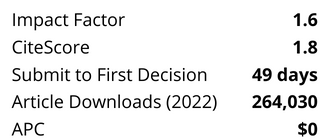The extensive application of rainwater harvesting (RWH) projects is inhibited by the challenge posed by the dry seasons. In a case study of Mnyundo Primary School, Tanzania, the performance of the RWH system was evaluated using a daily water balance model. The methodology is based on defined dry season parameters – no water days (NWDs), rainwater usage ratio (RUR), and water level in local water storages; while the system operational methods involve users adopting either fixed (constant) demand or variable demand (demand varying with respect to available water in the storage tank), throughout the system utilization. Additionally, the cost of installing an RWH system to achieve a substantial reduction of NWDs to zero was calculated. It was established that the existing system cannot achieve zero NWDs under consideration of both operational methods. However, the greater the number of tanks, the lower the NWD, and in the variable demand operational method, better RUR was achieved. For mitigating water shortages in the dry season, the school should adopt RWH in two buildings under the demand scenario (300 ≤ demand ≤ 900 L/d, for the respective water levels in the storage tanks), yielding 58% RUR. The performance of the system can be improved by monitoring water levels and adhering to demand guidelines. These are useful strategies for practitioners in water supply.
Skip Nav Destination
Article navigation
Research Article|
December 01 2016
Performance evaluation of rainwater harvesting system and strategy for dry season challenge
Tulinave Burton Mwamila;
Tulinave Burton Mwamila
*
aDepartment of Rural Water Supply, Ministry of Water and Irrigation, P.O. Box 9153, Dar es Salaam, Tanzania
*Corresponding author. E-mail: mtulinave@gmail.com
Search for other works by this author on:
Moo Young Han;
Moo Young Han
bDepartment of Civil and Environmental Engineering, Seoul National University, 599 Gwanak –ro, Gwanak – gu, Seoul 151-744, South Korea
Search for other works by this author on:
Preksedis Marco Ndomba;
Preksedis Marco Ndomba
cDar es Salaam Institute of Technology, P.O. Box 2958, Dar es Salaam, Tanzania
Search for other works by this author on:
Zacharia Katambara
Zacharia Katambara
dDepartment of Built Environment Engineering, Mbeya University of Science and Technology, Mbeya, Tanzania
Search for other works by this author on:
Water Practice and Technology (2016) 11 (4): 829–837.
Citation
Tulinave Burton Mwamila, Moo Young Han, Preksedis Marco Ndomba, Zacharia Katambara; Performance evaluation of rainwater harvesting system and strategy for dry season challenge. Water Practice and Technology 1 December 2016; 11 (4): 829–837. doi: https://doi.org/10.2166/wpt.2016.090
Download citation file:
Sign in
Don't already have an account? Register
Client Account
You could not be signed in. Please check your email address / username and password and try again.
Could not validate captcha. Please try again.
eBook
Pay-Per-View Access
$38.00




%20cropped.png?versionId=5954)